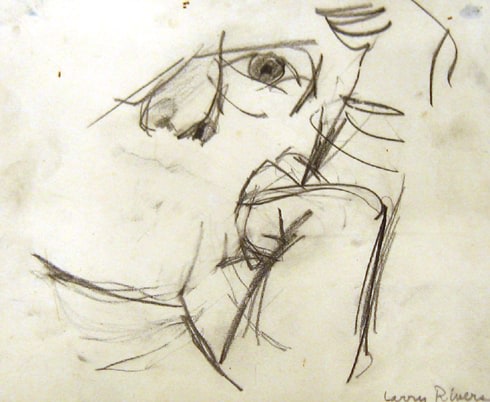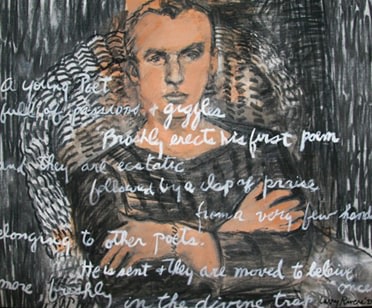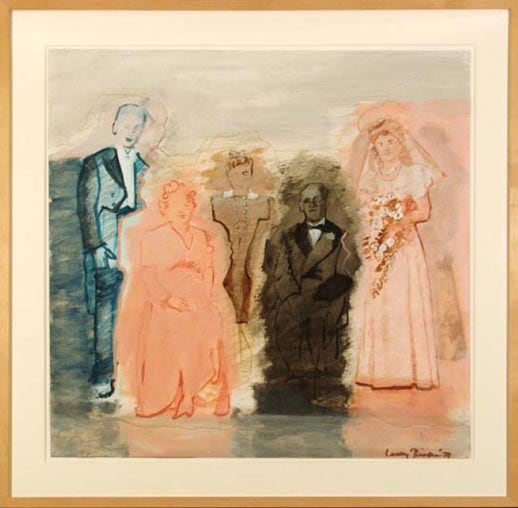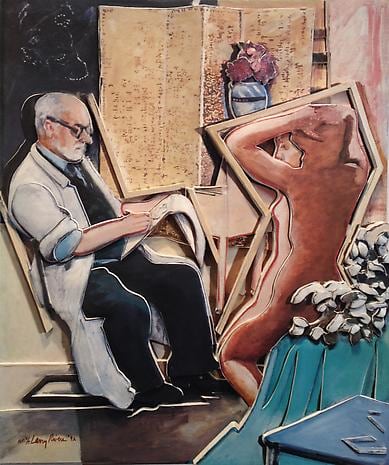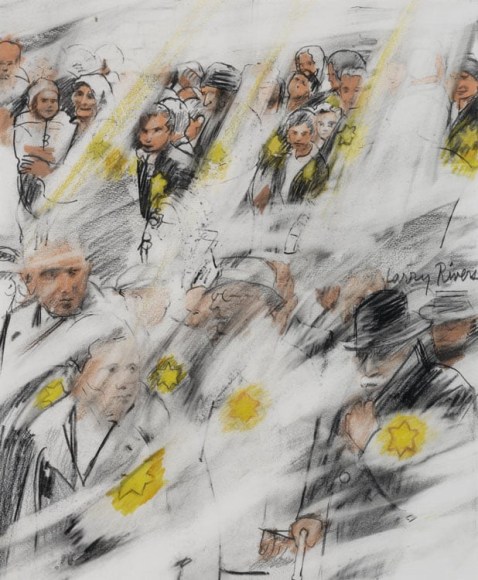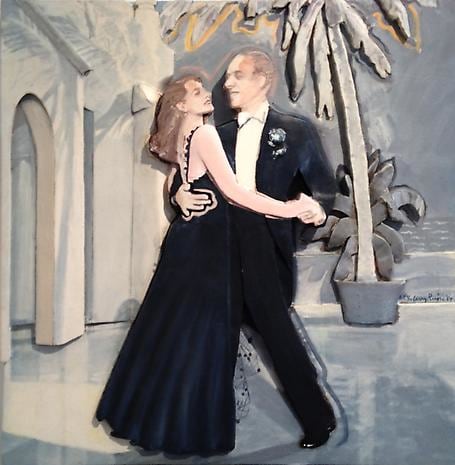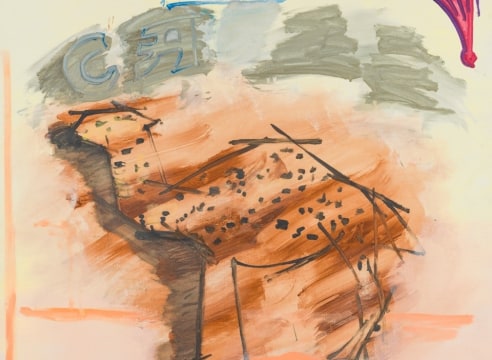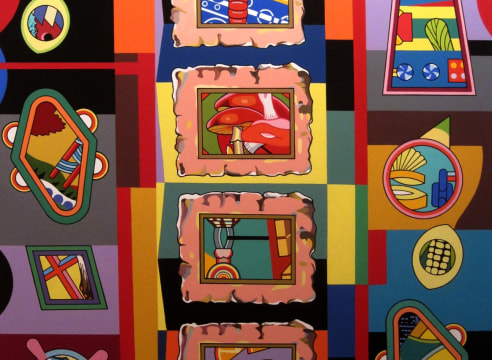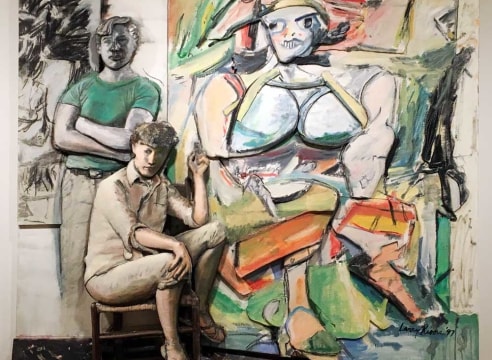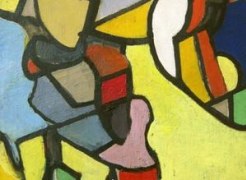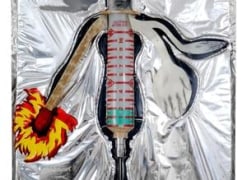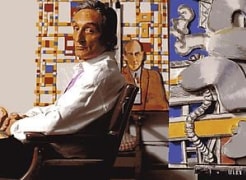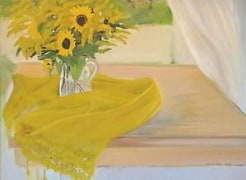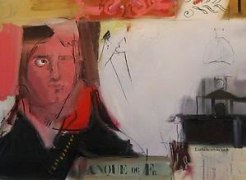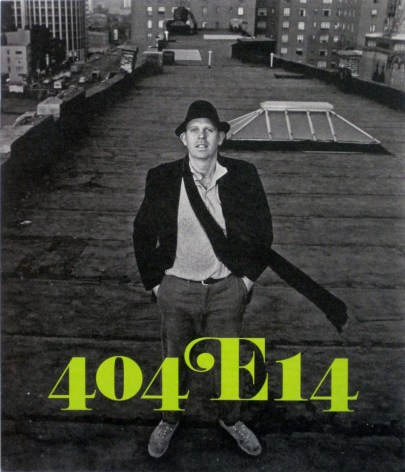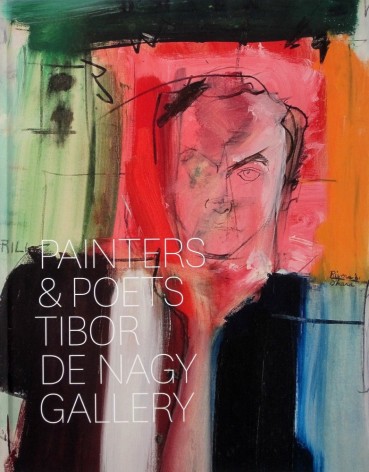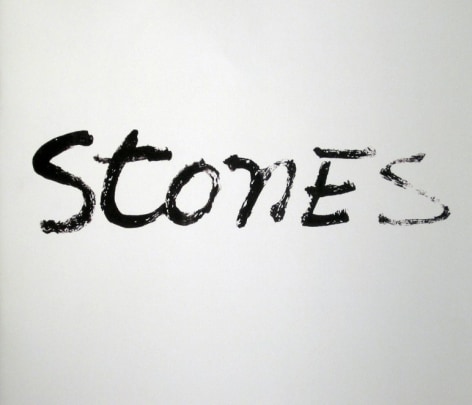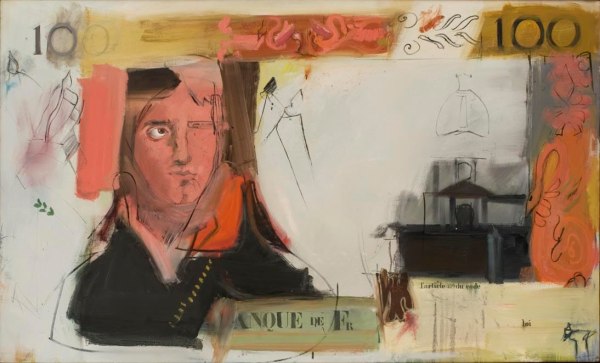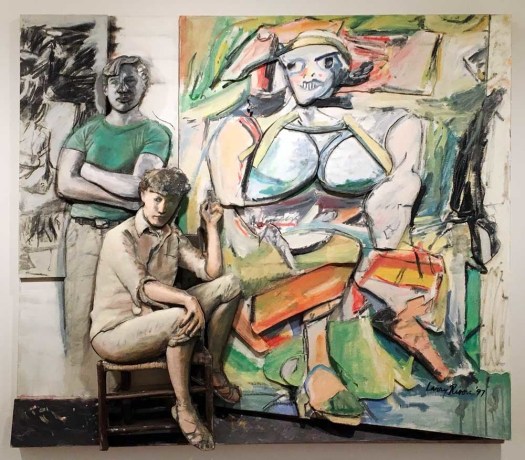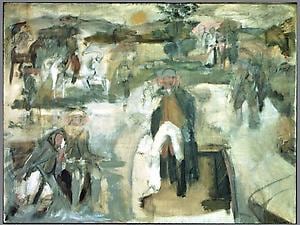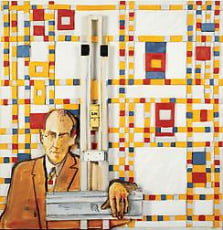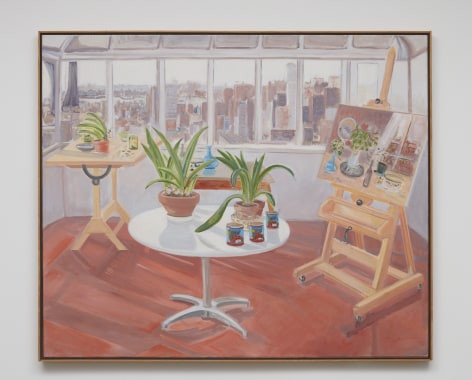
Known as the Godfather of Pop Art, New York based multi-disciplinary artist Larry Rivers sought to continually redefine formal and conceptual artistic boundaries for over half a century. Rivers’ keen draftsmanship and interest in history is ever present in his expansive nonlinear oeuvre. He had studios in New York City and South Hampton where he worked until his death ins August 2002.
Rivers practiced a hybrid version of representational abstract expressionism. He appropriated pop imagery and implemented his fertile fascination for newly developed materials. He built outward from the wall and canvas, incorporating nontraditional materials such as plastics, foam board and video recording technology. Subject matter spanned from the political, to drug use, to the Holocaust, to the common and familiar, like Hollywood or advertisements, to the personal by way of his family or mother-in-law Beridie. Larry Rivers’ unconventional, often controversial means and methods for artistic making, were sometimes difficult to define or understand in the moment of time they were generated. His hybrid constructions from the 1970-2000 appear very fresh today, speaking to a younger generation of artists. This maverick spirit lands him firmly in 20th century art historical discourse.
In the Bronx, it was to Samuel and Soyna Grossberg, Ukrainian Jewish Immigrants, that Yitzorch Loiza Grossberg was both in August 1923. He later changed his name to Larry Rivers, in the early 1940s, while playing as a Jazz saxophonist with the group “Larry Rivers and the Mudcats”. At this time he was studying at Juilliard and collaborating with the likes of Miles Davis. Influence from Nell Blaine redirected his artistic endeavors to study with Hans Hofmann and this led to developing creative relationships with Jane Freilicher, Louisa Matthíasdóttir and Frank O’Hara. By the mid-1950s Rivers would experience an unexpected breakout success on the New York art scene. Rivers had his first retrospective in 1965 at the Rose Art Museum, Brandeis University, Waltham, and Massachusetts. The show traveled to the Pasadena Art Museum, Jewish Museum, New York, Detroit Institute of Arts and the Minneapolis Institute of Arts.
His work is in the collections of the Museum of Modern Art, the Metropolitan Museum of Art, the Whitney Museum of American Art, the Solomon R. Guggenheim Museum and the National Gallery of Art in Washington D.C.

